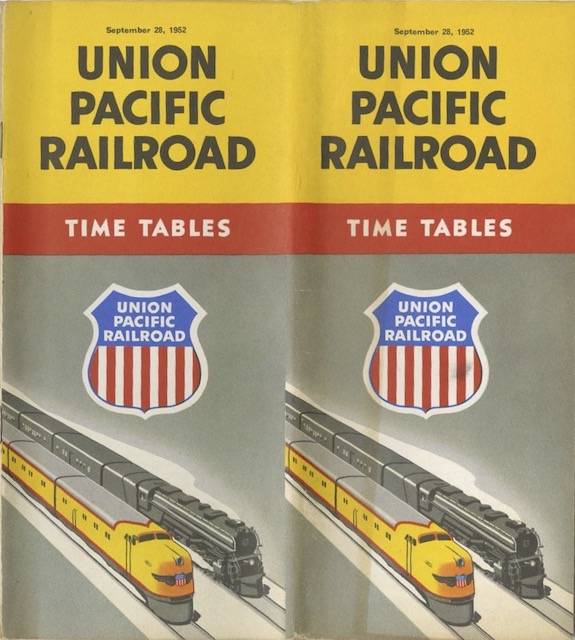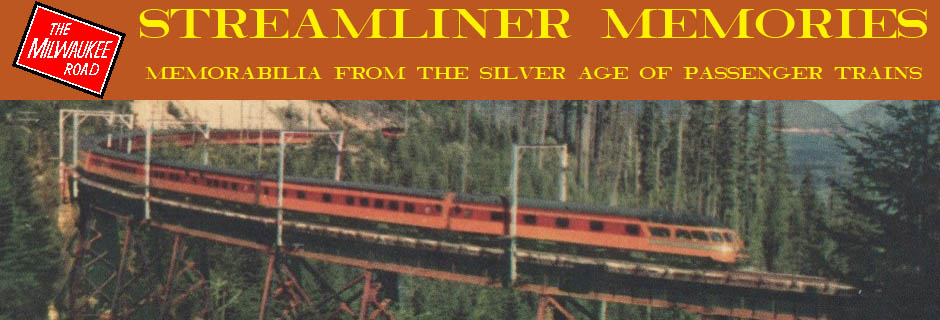As I’ve previously noted, many railroads were forced to make changes to their timetables in 1951 as a result of an Interstate Commerce Commission rule that went into effect that year requiring railroads to either install automatic train controls or limit the speed of their trains to 79 miles per hour. The Santa Fe installed such controls on part of its main line to allow the Super Chief and El Capitan to go 100 miles per hour and meet the trains’ 39-3/4-hour schedule from Chicago to Los Angeles. Most other railroads slowed their trains.
 Click image to download a 32.3-MB PDF of this timetable.
Click image to download a 32.3-MB PDF of this timetable.
The train controls the ICC wanted had actually been invented in about 1918 by Frank Sprague, the man who had previously developed the first workable electric streetcar, first electric rapid transit, and first electric high-speed elevator (making skyscrapers possible). After Sprague installed such controls in New York’s Grand Central Station, the ICC issued an order requiring every class 1 railroad to install similar controls on at least one division, so some railroads already had them when the ICC’s later order limiting train speeds came out in 1950.
As reflected in this timetable, Union Pacific managed to keep the City of Los Angeles on a 39-3/4-hour schedule competitive with the Santa Fe. I don’t know whether it had to install train controls or if it already had them installed. UP mostly maintained speeds of the City of San Francisco over its tracks, but SP slowed them down, probably to avoid having to install train controls, adding a half-hour to the train’s schedule.
The City of Portland‘s time had already been slowed down to 40-1/2 hours in 1950. In this 1952 timetable, 20 minutes had been added to the eastbound train, while the westbound train was still 40-1/2 hours.
Another change on the timetable is that the disappearance of the Utahn, which had served as the City of St. Louis‘s connection to Los Angeles. When the latter train was inaugurated in 1946, UP only had enough streamlined cars to run it from St. Louis to Cheyenne, but the acquisition of more cars allowed it to continue the streamliner all the way to Los Angeles. As a result, the Utahn was no longer necessary.
Before forgetting about the Utahn, I want to note how unimaginative many of UP’s train names were. There were the State-N trains (Idahoan, Kansan, Utahn). There were the Special trains (Butte, Yellowstone, Northwest). There were the City of trains. Even UP’s premiere train in the pre-streamlined era, the Los Angeles Limited, lacks the romance of the Overland Limited, Portland Rose, or Gold Coast. The latter three along with the Columbine and Pony Express show that the railroad sometimes could be inspired, but mostly it fell short of names like the Chief, Golden State, or Empire Builder.
